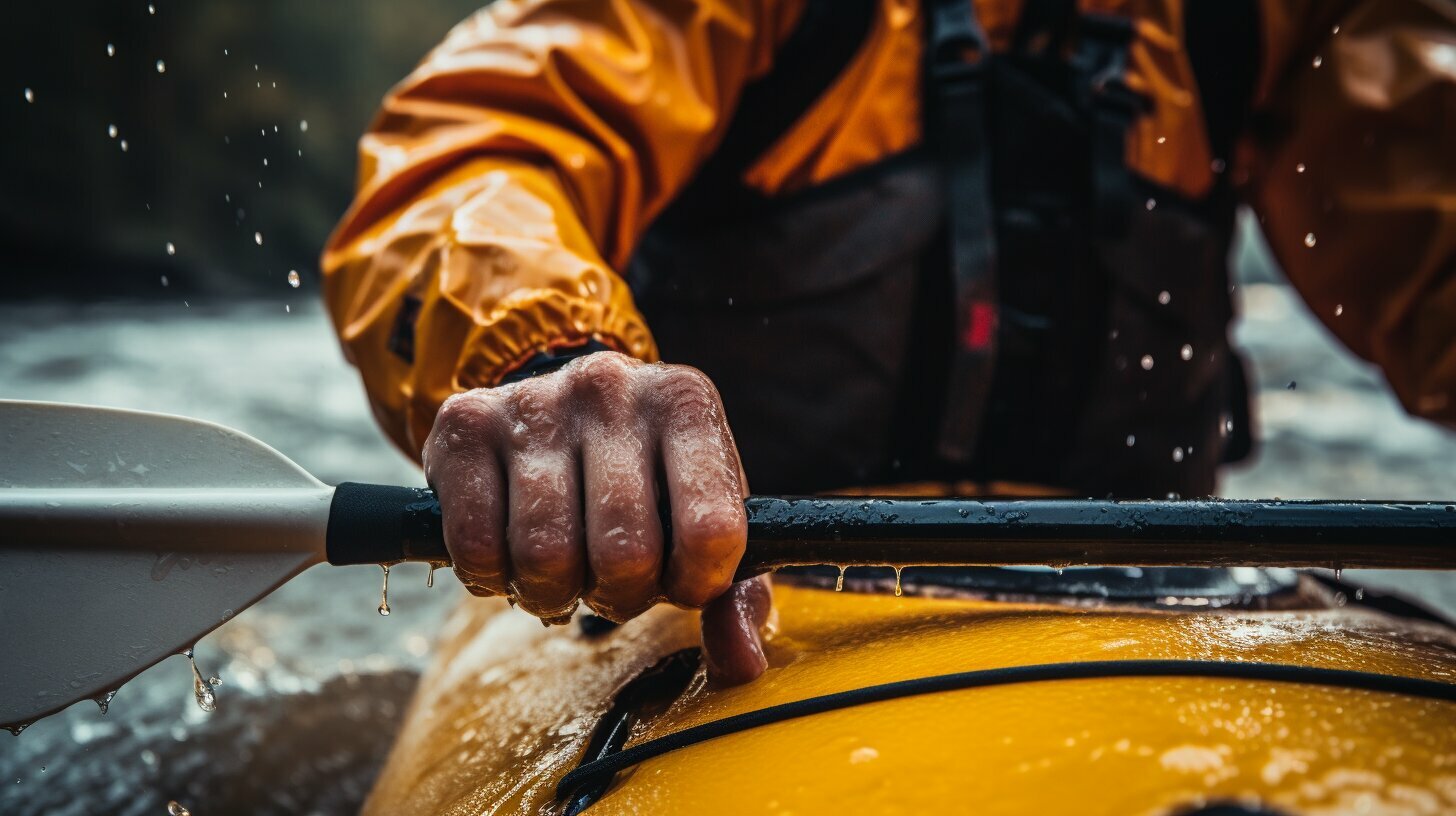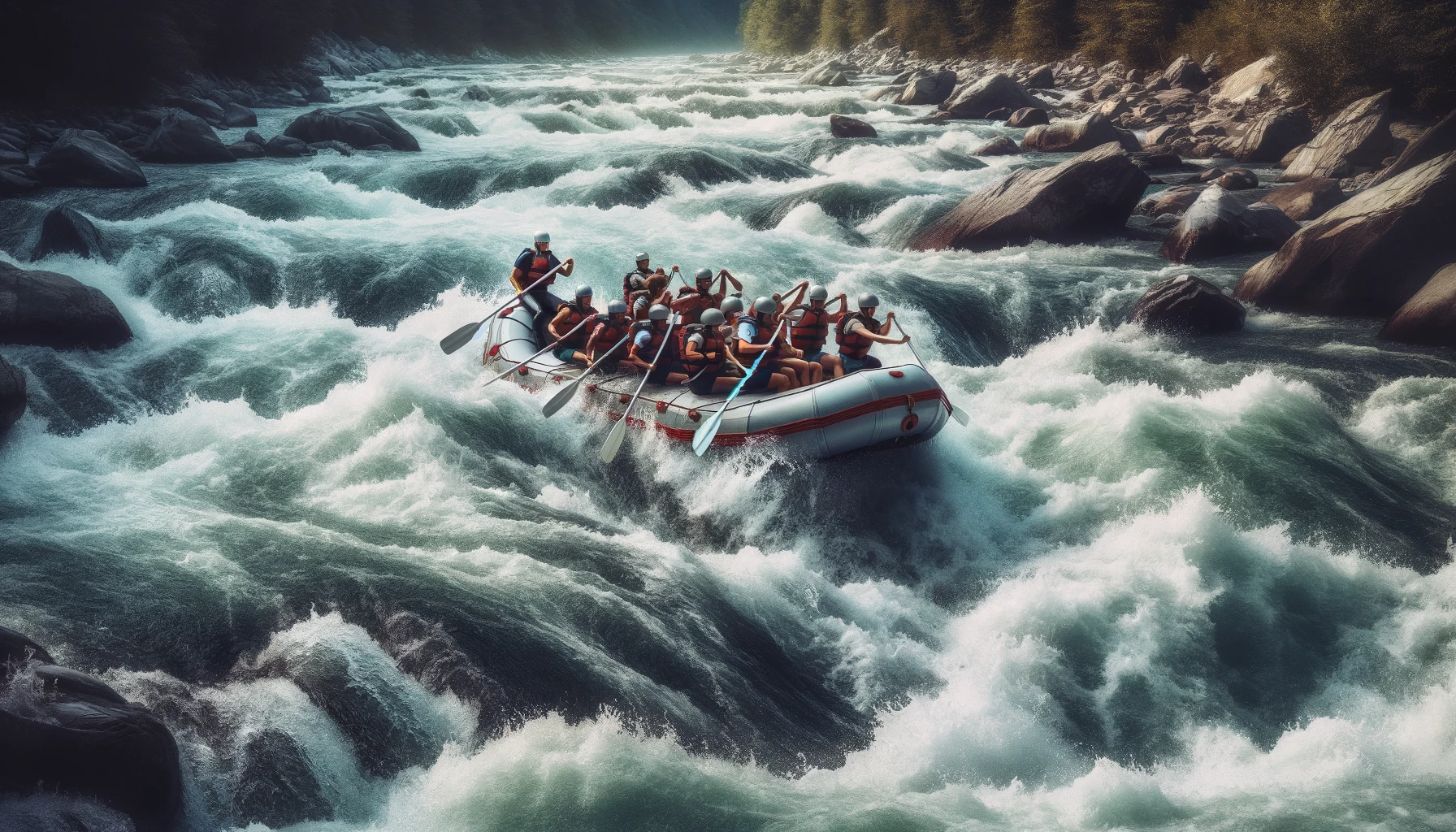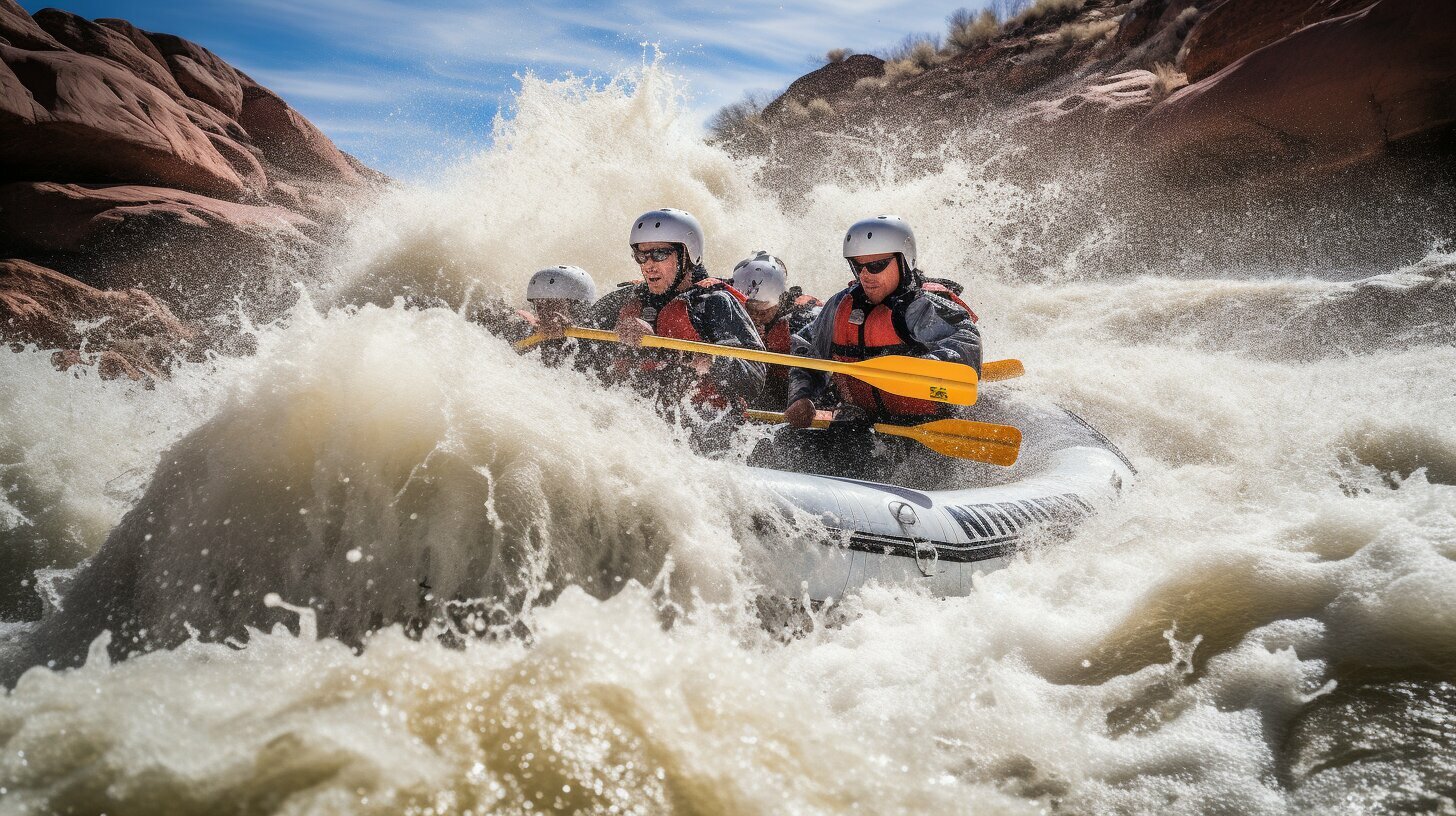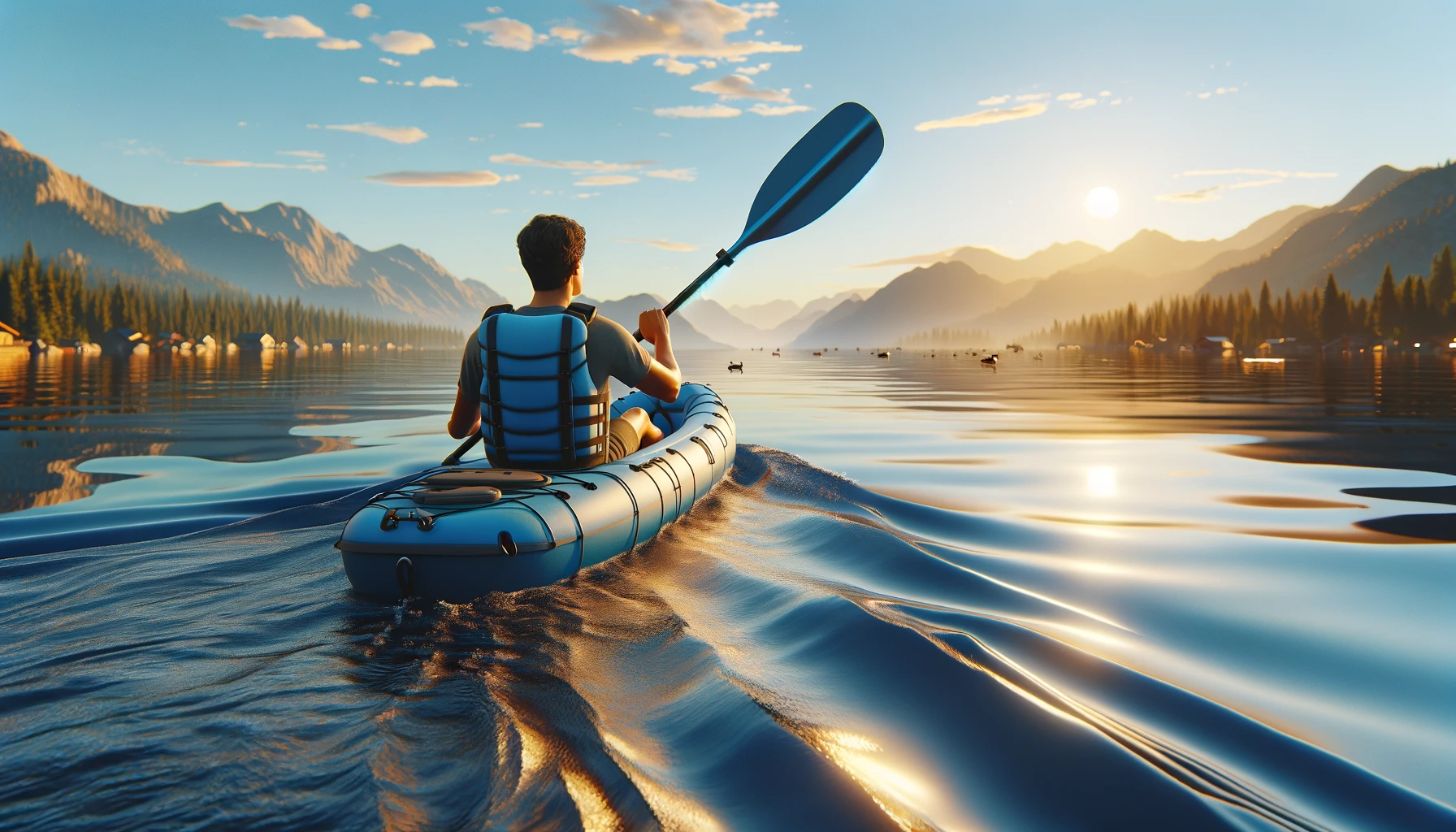Have you ever wanted to experience the rush of navigating through rushing whitewater in a kayak? Whitewater kayaking is an exhilarating and challenging outdoor activity that offers an unparalleled adventure experience for beginners and experts alike.
To help you get started on your whitewater kayaking journey, we have put together this beginner’s guide to whitewater kayaking. This guide will equip you with all the essential knowledge and skills you need for a safe and enjoyable adventure.
Key Takeaways
- Whitewater kayaking is a thrilling outdoor activity for beginners and experts alike.
- This beginner’s guide will provide you with all the essential knowledge and skills you need to get started on your whitewater kayaking adventure.
Getting Started with Whitewater Kayaking
If you’re ready to embark on a thrilling adventure in the great outdoors, whitewater kayaking is an exciting way to do it. Not only is it an excellent workout, but you’ll also have the opportunity to explore some of the world’s most beautiful natural scenery.
Before you can begin your whitewater kayaking adventure, you need to learn the basics. Here’s how to get started:
Disclosure: When you buy through links on our site, we may earn an affiliate commission.
- Research and plan: Start by researching the best locations for whitewater kayaking in your area. Look for beginner-friendly rivers and rapids, and find a reputable guide or instructor to help you learn the ropes.
- Gather your gear: The right gear is essential for a safe and enjoyable experience. You’ll need a kayak, paddle, helmet, personal floatation device (PFD), and appropriate clothing and footwear. Consider renting gear until you’re ready to invest in your own.
- Take a lesson: It’s essential to learn proper technique before embarking on your own. Sign up for a class or lesson to learn the basics of paddling, navigating rapids, and staying safe on the water.
- Practice: Once you’ve learned the basics, practice as much as possible. Start with calm, flat water, and gradually work up to more challenging rapids as you gain experience and confidence.
With these fundamental steps, you’ll be prepared to start your whitewater kayaking journey. Remember to always prioritize safety and never embark on a trip alone.
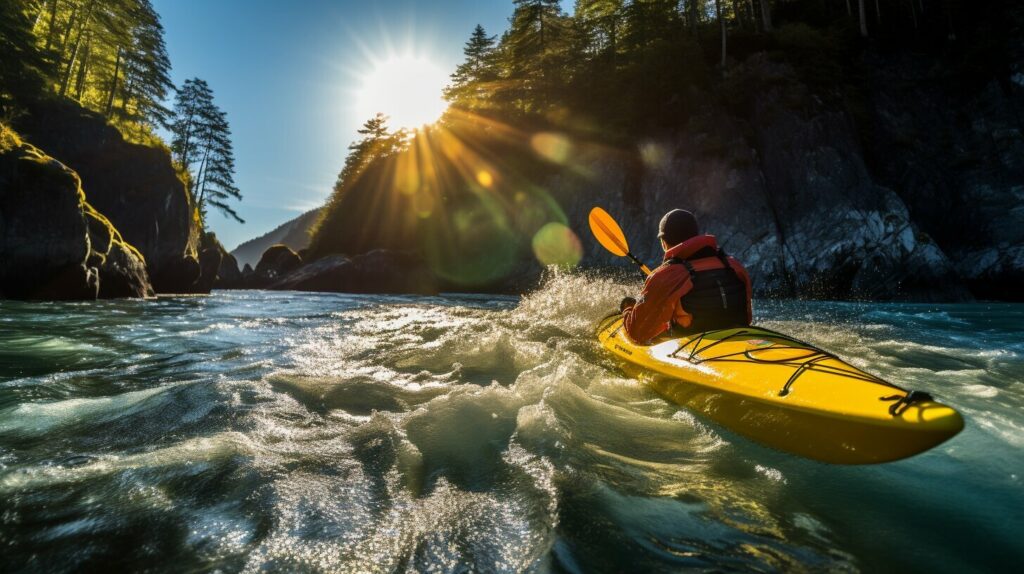
Essential Gear for Beginner Whitewater Kayakers
When preparing for a whitewater kayaking adventure, having the right gear is crucial for a safe and enjoyable experience. As a beginner, it can be overwhelming to determine what equipment you need and what you can do without. In this section, we will cover the essential gear that every beginner should have before hitting the rapids.
Kayak
Your kayak is the most important piece of equipment for your whitewater adventure. As a beginner, it is recommended to start with a stable, easy-to-maneuver boat. Look for kayaks specifically designed for whitewater use. These kayaks usually have a short length, round edges, and a planing hull that is wider than traditional kayaks. The Dagger Mamba is a great option for beginners and is designed to handle a wide range of river conditions.
Paddle
The type of paddle you choose can make a big difference in your kayaking experience. A paddle designed for whitewater kayaking should be shorter than a traditional paddle, with blades that are wider and curved. The curved blades are designed to allow for easier maneuverability and control. Look for a paddle with an adjustable shaft, so you can customize the length to your preference. The Werner Sherpa Paddle is a popular choice among beginners and is known for its durability and performance.
Spray Skirt
A spray skirt is an essential piece of gear that keeps water from entering your kayak while you paddle. The skirt fits snugly around your waist and the edge of the cockpit. Look for a spray skirt that is specifically designed for whitewater use, as they are made from durable and waterproof materials. The Snap Dragon Flirt EXP Whitewater Kayaking Spray Skirt is a great option for beginners, as it is easy to put on and take off.
Helmets
A helmet is a must-have for whitewater kayaking, as it protects your head from injury. Look for a helmet that is designed specifically for kayaking, with a hard outer shell and a soft foam interior. Ensure that the helmet fits snugly on your head and does not move around. The Sweet Protection Rocker Helmet is a popular choice among beginners and is known for its comfort and safety features.
PFD (Personal Flotation Device)
A PFD, also known as a life jacket, is another essential piece of gear for whitewater kayaking. Look for a PFD that is designed specifically for kayaking and is comfortable and adjustable. The PFD should fit snugly around your chest and have multiple straps to ensure a secure fit. The NRS Zen Rescue PFD is a great option for beginners, as it provides buoyancy and safety features.
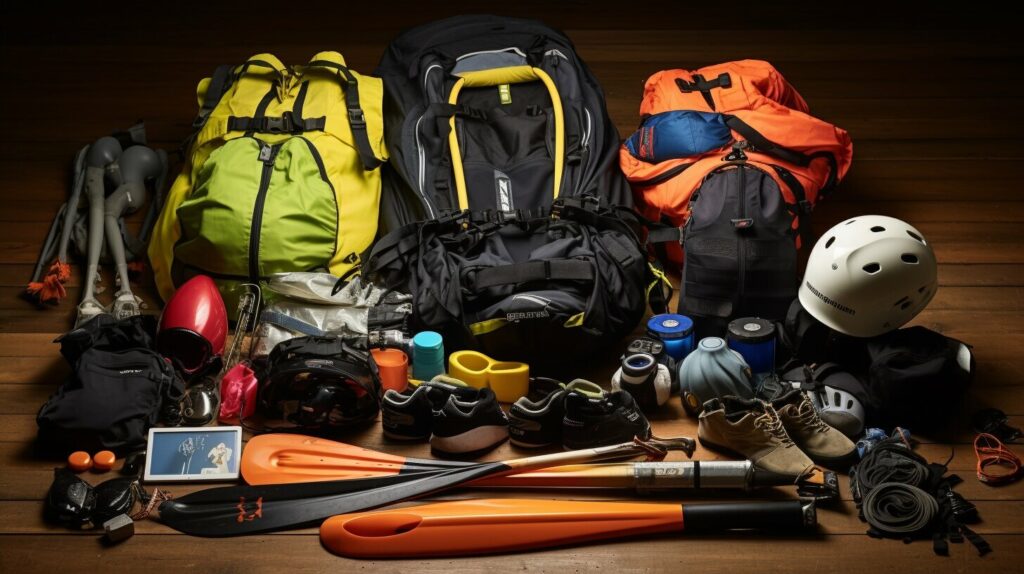
These are the five essential pieces of gear every beginner should have before embarking on a whitewater kayaking adventure. As you gain experience, you may want to invest in additional gear, such as a wetsuit or drysuit, but for now, stick to the basics and enjoy the thrill of the rapids with peace of mind.
The Basics of Whitewater Kayaking
If you’re new to whitewater kayaking, it’s important to master the fundamental techniques and skills before attempting to navigate challenging rapids. Here are the basics:
1. Paddle Strokes
Paddle strokes are the foundation of whitewater kayaking. The two most important strokes to learn are the forward stroke and the sweep stroke. The forward stroke propels the kayak forward, while the sweep stroke turns the kayak.
It’s essential to practice these strokes until they become second nature. A good way to practice is to paddle in calm water and focus on perfecting your technique.
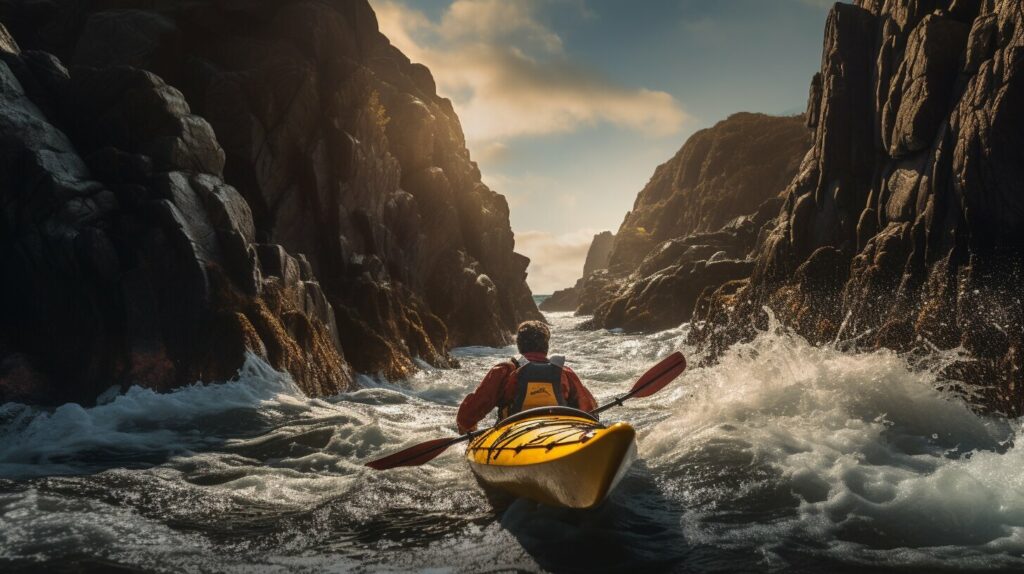
2. Bracing
When kayaking in whitewater, you’ll encounter waves and currents that can easily knock you off balance. Bracing is a technique that helps you maintain your balance and prevent capsizing.
There are a few different types of braces, but the most common is the low brace. To perform a low brace, extend your paddle to one side of the kayak, with the blade flat on the water’s surface. Apply downward pressure to stabilize the kayak.
3. Eddy Turns
Eddy turns are an essential maneuver for navigating whitewater rapids. An eddy is a calm spot behind a rock or other obstruction. Eddy turns allow you to enter and exit eddies safely and efficiently.
To perform an eddy turn, paddle toward the eddy, then quickly turn the kayak and angle it into the current. This will allow you to enter the eddy. To exit, simply paddle back out into the current.
4. Ferries
A ferry is a technique that allows you to cross the current of a river without being swept downstream. This is useful when you need to paddle across a river to reach a specific destination.
To perform a ferry, paddle at an angle to the current, with the upstream edge of the kayak facing upstream. This angle will allow the current to push the kayak across the river.
5. Rolling
Rolling is a technique that allows you to right your kayak after capsizing. While this is a more advanced technique, it’s important to learn early on in your whitewater kayaking journey.
To perform a roll, tuck your body forward and use your paddle to initiate the roll. Practice in calm water before attempting to roll in whitewater.
Mastering these basic techniques will allow you to navigate whitewater rapids safely and confidently. With practice and experience, you’ll be ready to tackle more challenging runs and explore new rivers.
Beginner-Friendly Whitewater Kayaking Tips
Now that you have learned the basics of whitewater kayaking, it’s time to start refining your skills and technique. Here are some tips to help you navigate the rapids with confidence:
- Keep your eyes on the water: As you paddle down the river, focus on the water in front of you instead of what’s around you. This will help you anticipate upcoming obstacles and react quickly.
- Use your core: The power in your paddling comes from your core, not your arms. Engage your abs and back muscles to maximize your paddling efficiency.
- Stay balanced: Keep your weight centered in the kayak to maintain your balance. If you feel yourself tipping, lean in the opposite direction to regain stability.
- Practice your rolls: Capsizing is a common occurrence in whitewater kayaking, so it’s important to know how to roll back up quickly. Find a local pool or calm body of water to practice your rolls before heading out to the rapids.
- Communicate with your group: If you’re kayaking with a group, make sure to communicate clearly and effectively. Use hand signals or verbal cues to indicate upcoming obstacles or changes in direction.
Remember, the key to successful whitewater kayaking is practice and patience. Don’t be afraid to challenge yourself and try new things, but always prioritize safety and follow the guidelines set by experienced kayakers.
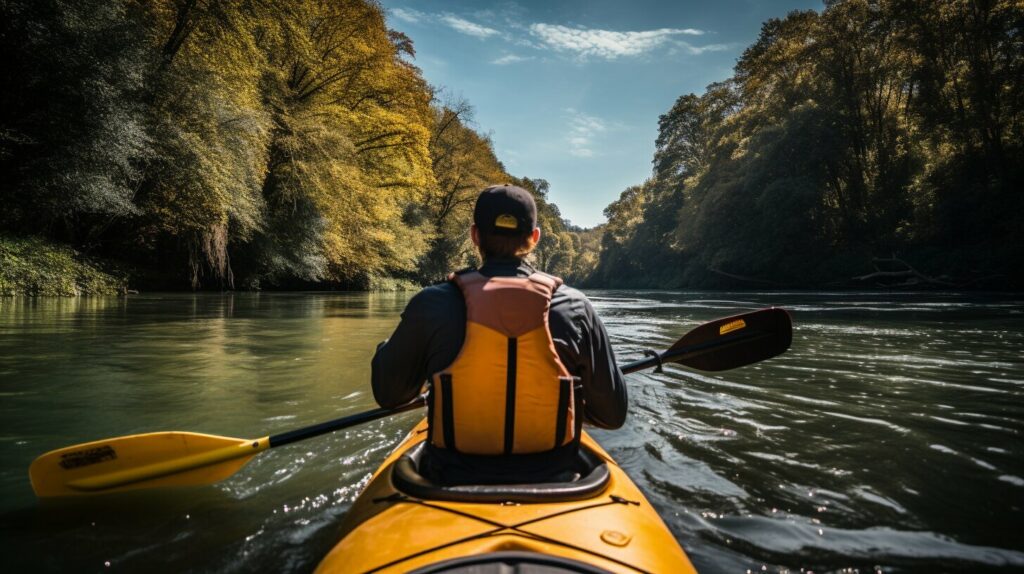
Beginner’s Safety Tips for Whitewater Kayaking
As a beginner, safety should always be your top priority when undertaking a whitewater kayaking adventure. Here are some essential safety tips to keep in mind:
- Always wear a personal floatation device (PFD). This is the most important piece of safety equipment you can have. Make sure your PFD fits properly and is rated for whitewater kayaking. It should be snug, but not too tight, and have adjustable straps for a customized fit.
- Never go kayaking alone. Always go with at least one other person and make sure you both have the necessary skills and experience for the particular river you plan to navigate. In addition to being more enjoyable, kayaking with a partner can potentially save your life in case of an emergency.
- Scout the river before you begin. Before getting into the water, take a careful look at the river and identify any potential hazards, such as rocks, rapids, or fallen trees. Plan your route and paddle accordingly to avoid any dangerous obstacles.
- Start out slow. As a beginner, it’s important to choose a river that matches your skill level. Don’t take unnecessary risks or try to navigate difficult rapids just because more experienced kayakers can do it. Start with easier sections and gradually work your way up to more challenging ones as you gain confidence and experience.
- Stay alert and focused. Always be aware of your surroundings and pay close attention to changes in the river’s flow, water level, and weather conditions. Avoid distractions, such as listening to music or using your phone, and stay focused on the task at hand.
- Learn basic rescue techniques. Even with the best planning and precaution, accidents can happen. As a beginner kayaker, it’s important to learn basic rescue techniques, such as how to help someone who has fallen out of their kayak or how to perform a T rescue.
By following these safety tips, you can help ensure a safe and enjoyable whitewater kayaking adventure as a beginner.
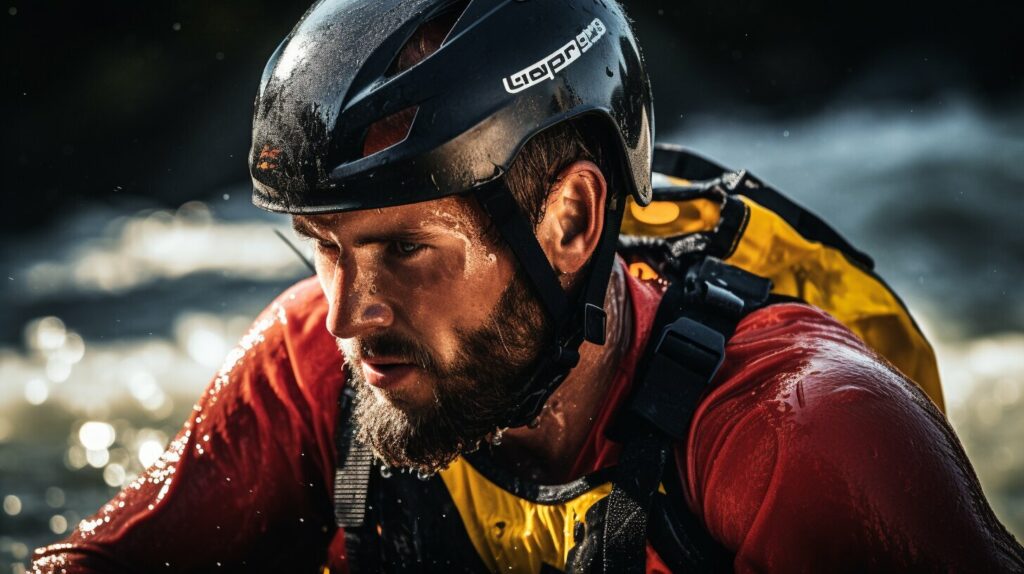
Step-by-Step Guide to Whitewater Kayaking
Now that you have a basic understanding of the essential gear and techniques required for whitewater kayaking, it’s time to break down the step-by-step process of navigating rapids.
Step 1: Choose the Right Kayak
The first step is selecting the right kayak for your needs. A beginner-friendly kayak should be stable and easy to control. Sit-on-top kayaks are a popular choice for beginners since they are more stable and allow for easy entry and exit.
Step 2: Put on Your Protective Gear
Once you have your kayak, it’s time to don your protective gear. Always wear a personal floatation device and a helmet while kayaking in whitewater. Additionally, consider wearing protective clothing that will keep you warm and dry.
Step 3: Launch Your Kayak
Find a suitable launch spot and carefully enter your kayak. Make sure to maintain your balance and keep your paddle handy.
Step 4: Learn Basic Paddling Techniques
Before you start navigating the rapids, you’ll need to master basic paddling techniques. Learn how to paddle forward, backward, and turn your kayak left and right.
Step 5: Approach Rapids with Caution
Approach rapids with caution and assess the water conditions before entering. Look for the path of least resistance, and avoid obstacles such as rocks and fallen trees that may impede your progress.
Step 6: Navigate Rapids
When navigating rapids, keep your paddle close to the kayak and use it to steer. Look ahead to anticipate any obstacles and paddle accordingly.
Step 7: Exit the Rapids
Once you’ve successfully navigated the rapids, find a safe spot to exit the water and disembark your kayak. Take a moment to catch your breath and celebrate your accomplishment!
By following these step-by-step guidelines, you can safely and confidently navigate whitewater rapids on your kayaking adventure.
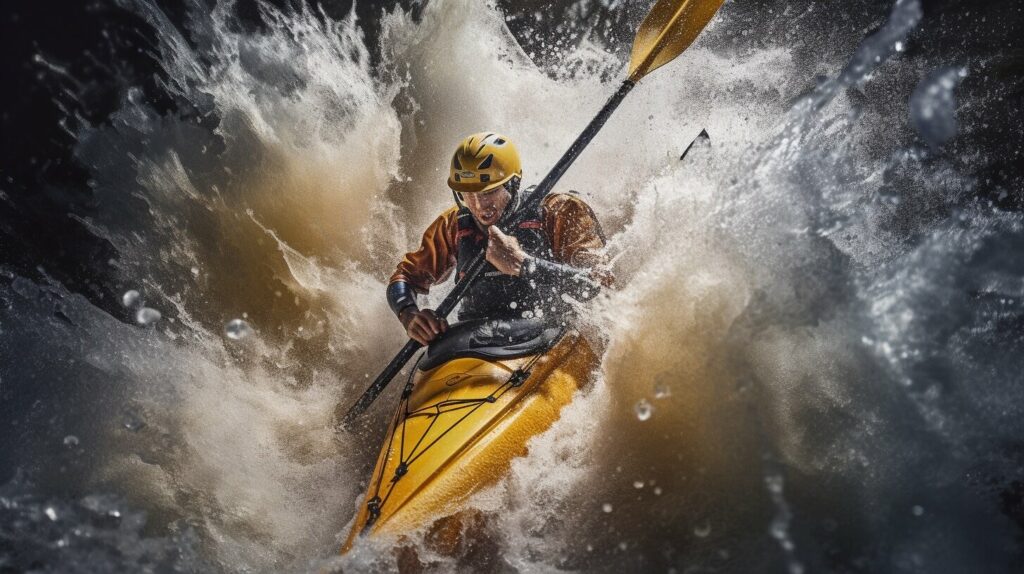
Tips for Conquering the Rapids
Now that you have learned the basics of whitewater kayaking, it’s time to tackle the rapids. Here are some additional tips and techniques to help you navigate even the most challenging whitewater:
- Stay balanced: Balance is key in whitewater kayaking. Keep your upper body stable and centered over the kayak, and use your hips to control the boat’s movements.
- Look where you want to go: Your eyes are an important tool when navigating rapids. Look ahead to anticipate obstacles and plan your course.
- Use the current: The natural flow of the river can work to your advantage. Use eddies and currents to help you maneuver through the rapids.
- Keep a steady pace: Maintaining a consistent speed can help you avoid getting stuck on rocks or other obstacles. Use your paddle to keep a steady rhythm.
- Stay relaxed: Whitewater kayaking can be intense, but it’s important to stay calm and relaxed. Take deep breaths and keep a clear head.
Remember, practice makes perfect. Don’t be discouraged if you don’t master these techniques right away. With time and experience, you’ll become a skilled whitewater kayaker.
Tips for Whitewater Kayaking Beginners: Conclusion
Now that you’ve learned the fundamentals of whitewater kayaking, you’re ready to embark on an exciting new adventure. Remember to always prioritize safety and equip yourself with the proper gear. With dedication and practice, you’ll be able to tackle challenging rapids with confidence.
Don’t be deterred by initial setbacks, as these will only fuel your drive to improve. Keep in mind the tips and techniques outlined in this beginner’s guide and continue to hone your skills.
Discover the Thrill of Whitewater Kayaking Today
Whether you’re seeking a new hobby or a thrilling adventure, whitewater kayaking offers an exhilarating way to experience the great outdoors. With the comprehensive beginner’s guide to whitewater kayaking, you’re equipped with the knowledge and skills needed to start your journey.
So why wait? Venture out and explore the vast expanse of whitewater rapids, and experience the rush of adrenaline that comes with conquering the waters.
Begin your whitewater kayaking adventure today and discover a whole new world of excitement and discovery.
FAQ
Q: What is whitewater kayaking?
A: Whitewater kayaking is a thrilling watersport where individuals navigate rivers and rapids using a small kayak. It requires skill, balance, and the ability to read and navigate through turbulent whitewater.
Q: Is whitewater kayaking dangerous?
A: Whitewater kayaking can be dangerous if proper safety precautions are not taken. It is important to have the necessary skills, knowledge, and equipment to ensure a safe kayaking experience. It is recommended to receive proper training and always paddle with a buddy or group.
Q: What gear do I need for whitewater kayaking?
A: Essential gear for whitewater kayaking includes a kayak, paddle, helmet, life jacket (PFD), sprayskirt, drysuit or wetsuit, and appropriate footwear. It is also important to have safety equipment such as a whistle and throw rope.
Q: How do I choose the right kayak for whitewater kayaking?
A: When choosing a kayak for whitewater kayaking, consider factors such as your skill level, weight, and paddling style. It is recommended to try different kayaks and consult with experienced paddlers or professionals to find the kayak that suits you best.
Q: Can I go whitewater kayaking as a beginner?
A: Yes, beginners can go whitewater kayaking. However, it is important to start on easier rapids and gradually progress to more challenging ones as your skills improve. Taking lessons or going with experienced paddlers can greatly enhance your learning and safety.
Q: How do I improve my whitewater kayaking skills?
A: Improving your whitewater kayaking skills requires practice, experience, and continuous learning. Taking lessons, practicing basic techniques, and gradually challenging yourself on different rapids are all effective ways to enhance your skills.
Q: What are some common whitewater kayaking techniques?
A: Some common whitewater kayaking techniques include edging (tilting the kayak to turn), bracing (keeping balance with paddle strokes), ferrying (crossing the river diagonally), and rolling (flipping the kayak upright after capsizing).
Q: What should I do if I capsize in whitewater?
A: If you capsize in whitewater, stay calm and follow these steps: tuck forward, hold onto your paddle, lean towards the surface, and perform a roll or wet exit. It is essential to practice rolling and self-rescue techniques in a controlled environment before attempting them in whitewater.
Q: How do I stay safe while whitewater kayaking?
A: To stay safe while whitewater kayaking, always wear a helmet and life jacket, paddle with a buddy or group, be aware of the river conditions and weather forecast, avoid alcohol or drugs, and know your own limits. It is also important to have proper rescue and communication techniques.
Q: Can I whitewater kayak in all types of weather?
A: Whitewater kayaking can be enjoyed in various types of weather, but it is important to take precautions and be aware of the conditions. Avoid kayaking in severe storms, high winds, or extremely cold temperatures. Always check weather forecasts and be prepared for changing conditions.

